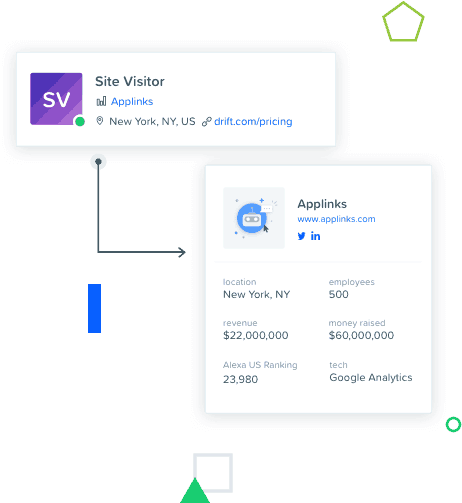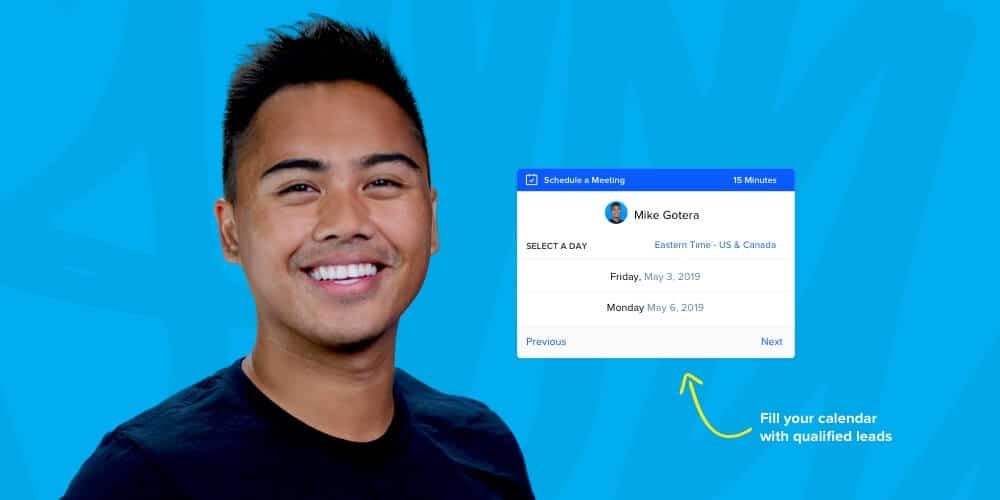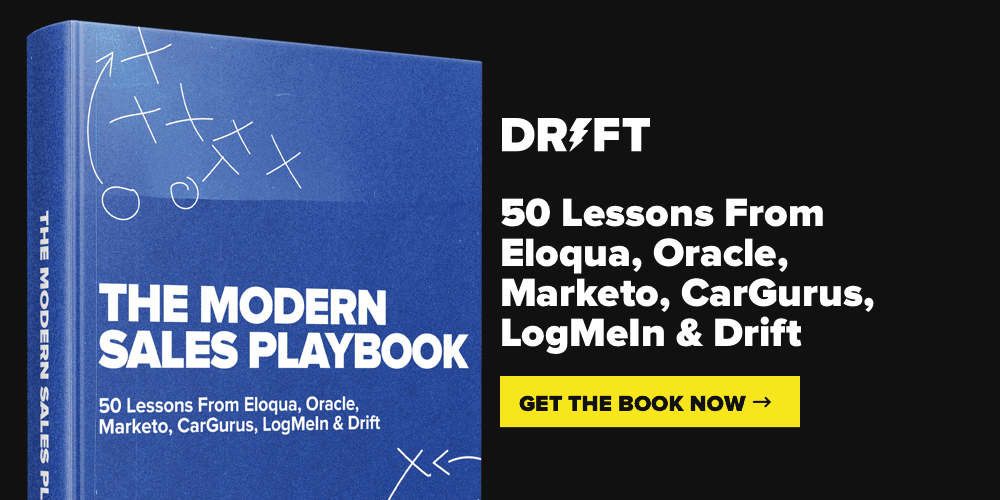
Times have changed. Customers have all the power. What does that mean for sales? Every single interaction matters.
As far as I’m concerned (and most sales leaders I speak with agree), the most important interaction happens at the beginning. I’m talking about the discovery call. This call can easily make or break the relationship with the prospect. Get it right, and you could land yourself a customer for life. Get it wrong, and it could be over before you ever had the chance to set up next steps. To do discovery right in 2020, you’ve got to find a happy medium between the old way and the new way.
So what’s causing discovery calls to derail conversations with potential new customers? Let’s take a look at where it’s all going wrong (and how to fix it.)
What’s Wrong With Discovery Today?
The anatomy of a traditional discovery call (the old way) isn’t customer-centric. It focuses on what the company wants – sales reps have a laundry list of qualifying questions and often turn the conversation into a bit of a Spanish Inquisition; what generally follows is a generic product pitch from the sales rep.
Opening up a discovery call like this creates friction with the potential customer. It becomes clear that the rep is only interested in the sale and doesn’t truly care about the prospect’s needs.
But guess what? Customers care more about if you can actually help them – and less about many features your product has. Moreover, the customer shouldn’t have to fit into whatever qualification process you’re using. This tends to make prospects uneasy about sales calls (and this makes them not want to talk to sales reps until they absolutely have to). It’s not an ideal scenario because most times buying decisions are made emotionally and then justified rationally. Not the other way around.
Do you ever mention the following to your prospects?
- GPCT: Goals-Plans-Challenges-Timeline
- CI: Consequences-Implications
- BANT: Budget-Authority-Need-Timing
Acronyms are great and can help guide you, but not when they’re all you care about. Because if the sole purpose of the acronyms you’re using is to help you sell (and not to help the customer buy), it’s going to produce friction and give the buyer a terrible experience.
Repeat after me. Discovery calls don’t have to turn into the Spanish Inquisition.
How many questions do you need to ask to make a successful discovery call… 10? … 20? … 100? ?
There’s no doubt that questions are fundamental to the selling process. Where many sales reps fail is asking the right questions. If your discovery calls rely on quantity over quality questions, you aren’t having a conversation – you’re running through a checklist.
If you ask me, these are the only four questions you need to determine if someone is qualified.
That’s right. Not 100 questions. Four.
Question 1: Are they a good fit for my product or service?
Question 2: Do they see themselves as a fit for the product?
Question 3: Can they make a decision to buy the product?
Question 4: How do they buy/how do they make a decision?
These four questions enable the sales rep to help the customer. These four questions lead to a CONVERSATION. These four questions welcome discussion – which is what a discovery call should be.
When we ask too many questions (especially ones that are clearly self-serving), prospects can start to feel like a call is turning into an interrogation. If they don’t know why you’re following a particular line of questions, sales resistance starts to set in. Sales Hacker’s Richard Smith backs me up on this. He says he once listened to one of his own discovery calls and cringed.
“It was clear that after 10 straight questions back-to-back, the prospect had shut down. They were like a closed book; the frustration in their voice was palpable.”
– Richard Smith, Sales Hacker
Instead of putting your prospects through an interrogation, let’s look at how you can shake up the way you conduct your discovery calls.
How To Change The Way We Do Discovery
We have so many tools that let us know exactly who our customers are right now, and it’s crucial to leverage them to make better use of our discovery calls.
Here’s how you can use those tools – and the four key questions – to improve your discovery calls today.
Answer question #1: Are they a good fit?
This is bread and butter sales rep stuff. You should already have the answer to this question before you jump on the phone and start a discovery call.
At Drift, we use an account-based marketing approach to make sure we’re targeting the right accounts. This style of marketing flips the traditional inbound marketing funnel on its head.

We gather the following firmographic information to see if a lead is a good fit before picking up the phone (or booking a meeting) based on their:
- Industry
- Annual revenue
- Location(s)
- Number of employees
- Current customers
- Competitive product or service offering
- Technology use
-
- Current pain points
All of this is done automatically using Drift Intel. It grabs a full company profile from every visitor that lands on our site. For example, a visitor lands on our site, and Drift Intel can see they’re a director of a SaaS company in NYC with 500 employees and $25-50M in annual revenue.

The tool will use this information to see if it matches up with our ideal customer profile. If they pass the test, the visitor will be automatically routed to a rep so they can strike up a chat conversation. (And if that chosen rep isn’t available, a chatbot jumps in and can book a meeting on their behalf.)
By using tech like this, we can capitalize on every single high-value visitor that lands on our website. More importantly, we know we’re striking when the iron is hot (at the moment of highest intent – when they are live on your site). And if the lead doesn’t match your ideal customer profile? Well, then they’re probably not worth pursuing in the first place.
Answer question #2: Do they see themselves as a good fit?
This is up to your sales skills. Are you able to listen to what the customer is saying and align the value of your product to their pain points/interests?
You should be able to understand their problem, prescribe the ideal solution, and align that solution with your product to help the prospect see value. Ultimately, the customer must come to this realization themselves (but you can help them get there ?).
If you can’t do this (or it seems like a mammoth task), maybe the potential customer isn’t a great fit for your company after all. And that’s okay too – because if they aren’t a fit, it’s important to figure this out as early as possible in order to save the prospect (and yourself) time.
Answer question #3: Can they make a decision to buy the product?
Even if a lead is a good match, you need to make sure you can project the timeline of when they’re likely to get started.
Before you can get into timing, it’s important to get a sense for their budget – or their ability to create a budget for this project. So it’s on you to help the prospect understand that the ROI of the product/service and how purchasing it makes crystal clear sense for their business. All of this is meaningless, however, if their team has too many competing priorities and don’t have the ability to actually go through with the project – you must get a firm grasp of their bandwidth early on.
If you can comprehend timeline, budget, proper ROI, and bandwidth to execute, then congratulations. You’ve successfully answered question #3. But before you celebrate, there’s still one question you need to answer.
Answer question #4: How do they buy/how do they make a decision?
The last question hinges on how well you understand the buying process.
Who is involved in making a buying decision? Are you talking to a decision-maker or an Influencer? What specific criteria are they looking at in order to make this decision? What’s absolutely vital and what’s just a nice-to-have? You need to find out in your initial discovery call if you’re talking to the person who will bless the deal and, if not, you must figure out who in the company will.
It is absolutely paramount to get a lay of the land of who/how internal decision-making takes place in order to keep the deal moving forward.
Wrapping Up
Traditional discovery calls are broken – they focus too much on helping companies sell and way too little on helping customers buy.
So if you want to successfully and efficiently attain more customers in the new decade, you’ve got to start by running truly customer-centric discovery calls.
This does not mean asking a potential customer 100 questions.
In fact, for my team, we’ve learned that all it takes is asking these four questions. And when we do this right, we find that our customers are happier, buy more quickly, and stick around for a long time.







